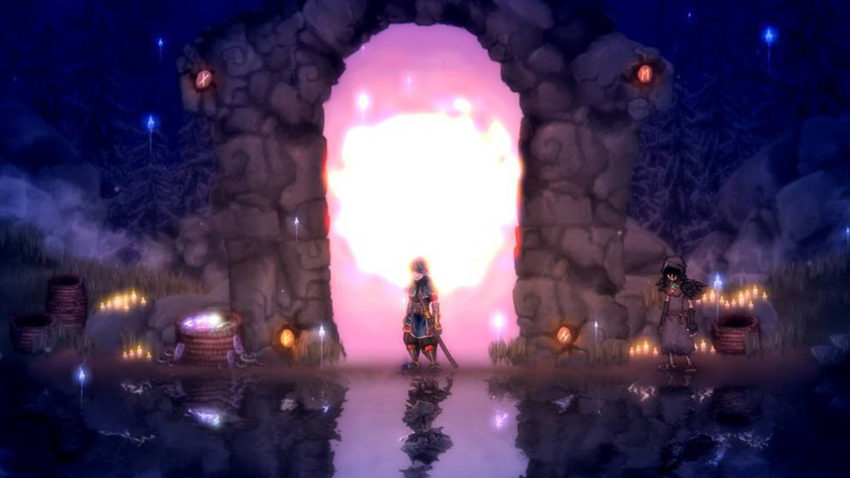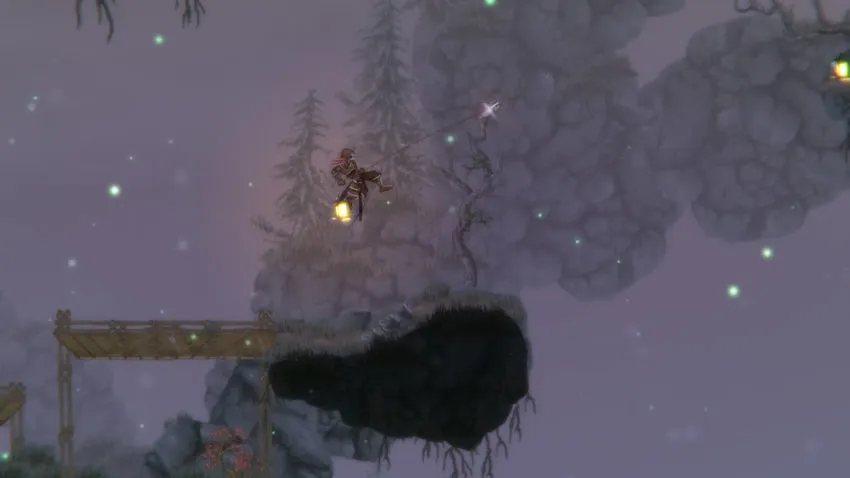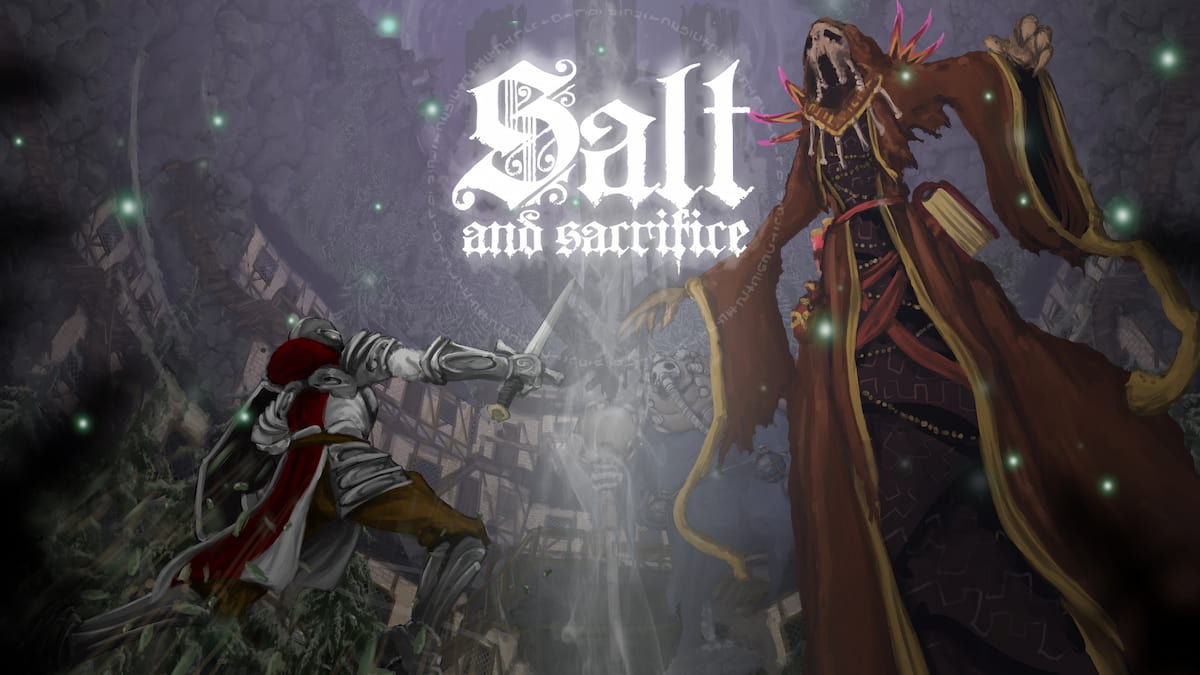Way back in 2016, Salt and Sanctuary was, for better and worse, essentially 2D Dark Souls. At the time (about a week before the North American release of Dark Souls 3) this was a real novelty. A subset of the gaming world had become enthralled by From Software’s newly forged formula. The fidelity with which Ska Studios (a.k.a. James Silva, with help from artist Michelle Silva) was able to recreate Dark Souls the RPG, with its impactful leveling and wide array of viable builds and playstyles, was kind of amazing. Six years later, though, another one-to-one imitation isn’t a sharp enough creative vision to cut the mustard, and Ska (this time with help from Shane Lynch) seems keenly aware of the predicament.
From the moment I was dropped into the beta for Salt and Sacrifice, its atmosphere was noticeably different from Salt and Sanctuary. Although it retains much of its predecessor’s visual style, Salt and Sacrifice is less ragged and more dreamlike. The familiar grays are frequently punctuated by glowing purple and striking orange. The world is also considerably less lonely, with several characters joining you in a hub area that looks primed to grow as you progress through the campaign.

Salt and Sacrifice further combats loneliness by giving you more opportunities to play with actual people. Co-op in Salt and Sanctuary was relegated to local play only, and it was more like an assist mode, with only the primary player making any progress in the campaign. Salt and Sacrifice, on the other hand, features full online co-op, with both players able to complete the entire campaign simultaneously. It also adds PvP invasions in the style of the Souls series.
The biggest change to the core loop in Salt and Sacrifice is in its bosses, the named sorcerers. Rather than traditional boss fights, these take the form of hunts, which task you with tracking down sorcerers by heeding the guidance of a shadowy force that I like to call “stink lines”. What follows is a series of skirmishes, during which you alternate between tracking and fighting your prey and their minions. This all culminates in a final showdown with the sorcerer, where their name is revealed and the two of you are locked in an arena to duke it out. There’s quite a bit of potential in this formula, though its success will hinge on how much variety is added over the course of the game.
The theme of tracking your prey as a deadly hunter is bolstered by an expanded suite of movement abilities. Platforming was never a big part of Salt and Sanctuary, but the sequel adds both a wall jump and a grappling hook to the mix. While neither addition is necessarily bad, it’s hard to say whether either is actually necessary. If these abilities can be woven into the combat and the hunts, they’ll probably add some flavor to the experience. If not, they might just dilute the game with platforming that isn’t offensive, but also isn’t compelling.

There’s also a new crafting system, although it’s a bit hit or miss. It’s well executed during the hunts themselves, where minions will drop materials that can often be crafted into gear that gives you an edge in that specific fight. Defeating a sorcerer also rewards you with a bunch of materials, which gives you the chance to craft a loadout that feels unique to them. On the other hand, regularly collecting materials just so you can recharge your flasks at checkpoints feels needlessly tedious.
Based on my time with the beta, I’m not sure if all these attempts at innovation will necessarily cohere. The co-op, in particular, is a huge selling point. The atmosphere and hunts are welcome changes. The platforming seems at risk of being extraneous, the crafting at risk of being messy. In this case, I’m glad Ska is taking the risks, because they give Salt and Sacrifice the chance to poke its head out from behind From Software’s long shadow, and in the process, establish an identity a little more its own.
Related: Is Salt and Sacrifice an Epic Games Store Exclusive?







Published: Mar 23, 2022 02:25 pm